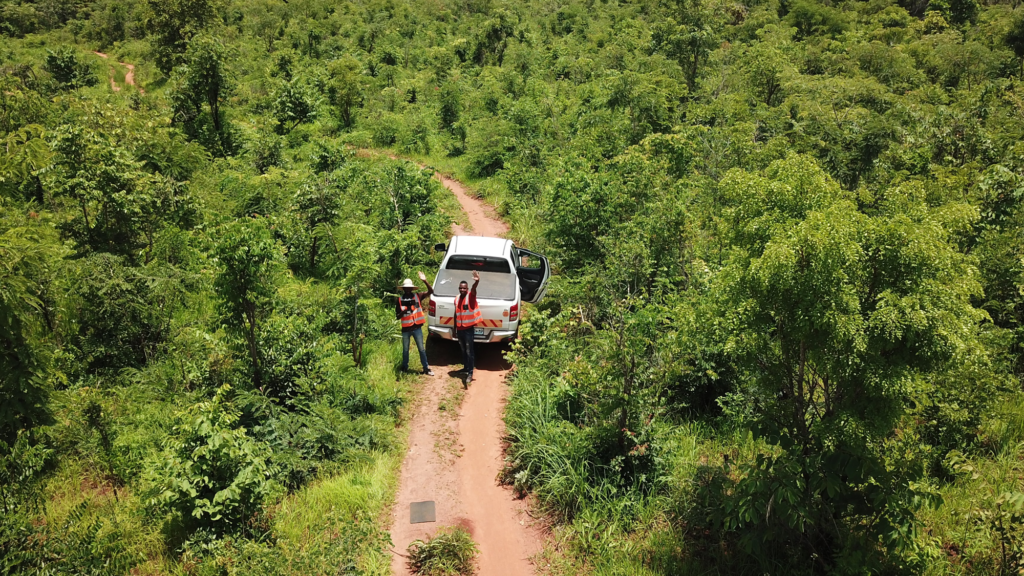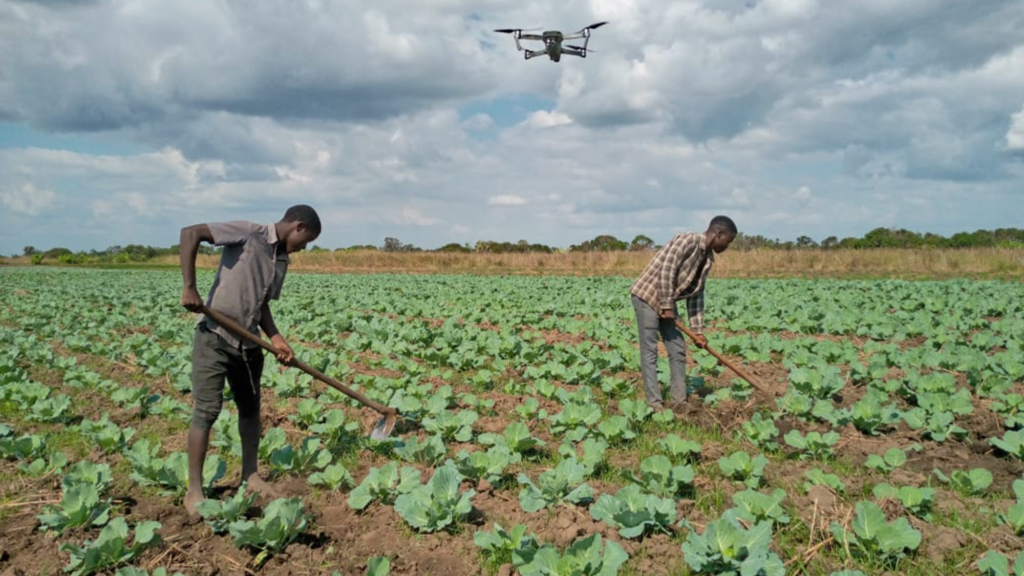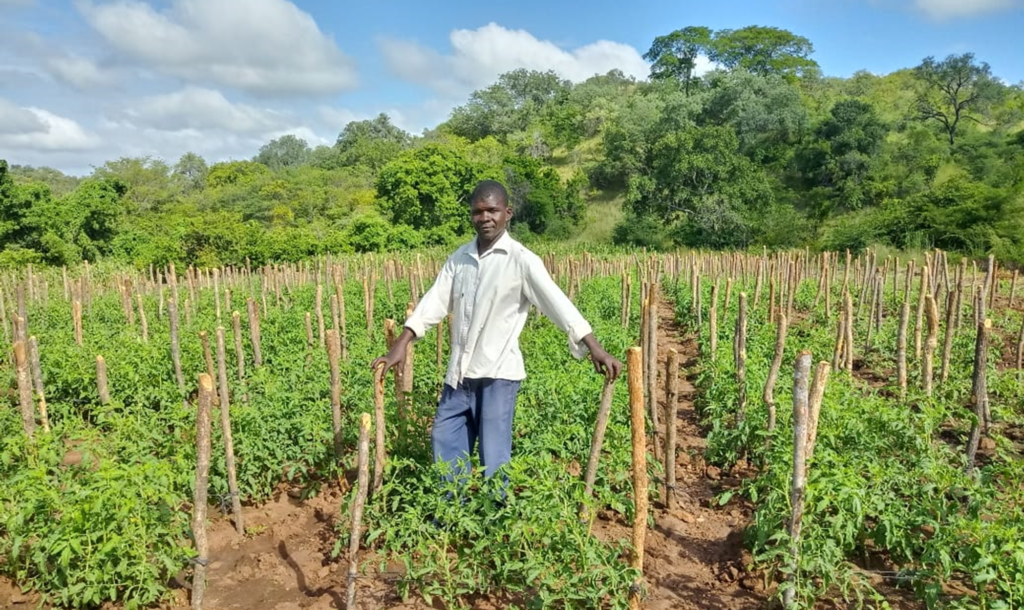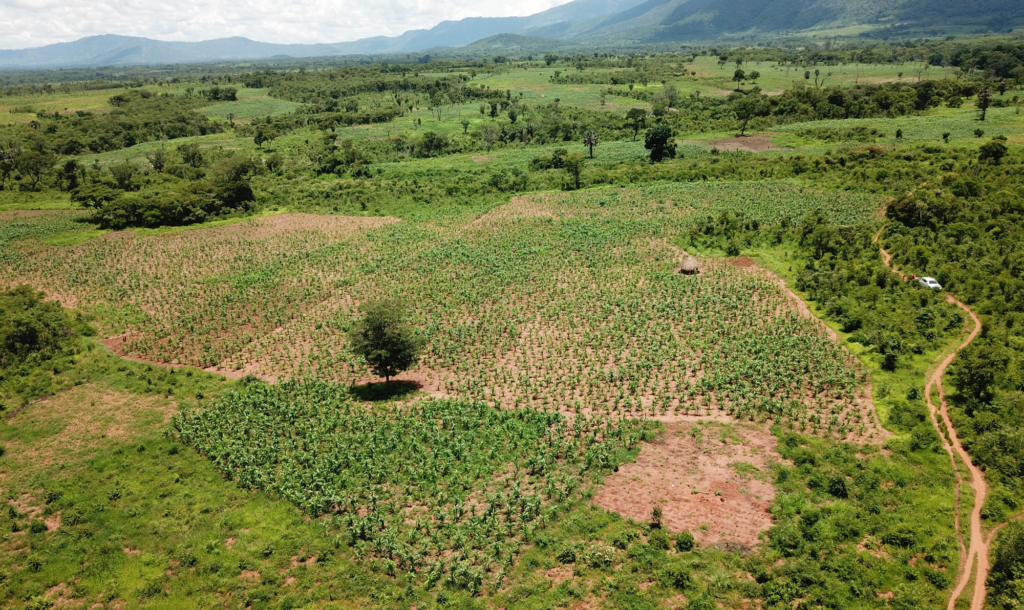FutureWater successfully completed the APSAN-Vale project in Mozambique, together with it’s partners Resilience BV, HUB and ThirdEye Mozambique. This project aimed to increase climate resilient agricultural productivity and food security, by increasing the water productivity and profitability of smallholder farmers in three areas in Mozambique: Báruè, Moatize, and Nhamatanda. The project prioritized small family sector farmers and demonstrated the best combinations of adoption strategies and technological packages. The impact of the adopted strategies was assessed on the farming plot level, sub-basin level, as well as basin level.
The main role of FutureWater in this project was monitoring water productivity in the target areas, by using remote sensing data from Flying Sensors (drones) and satellite imagery in combination with a water productivity simulation model and field observations. The water productivity was used as an indicator to quantify the impact of the innovations on smallholder agriculture. These innovations can be technical packages, like interventions and trainings, and adoption of lessons-learned through farmer-to-farmer communication.
In December 2022, FutureWater published its Water Productivity Analysis for the irrigated season in 2022. Results are provided on the crop development during the growing season for vegetation status and canopy cover. These results are based on periodic Flying Sensor maps, which can be found on the online data portal. The assessment of water productivity was presented with maps of water productivity and change compared to the baseline assessment for these districts. After normalization for climatic conditions, the increase in overall crop specific water productivity at field level was found to be +55% in Báruè, +29% in Moatize, and +63% in Nhamatanda, resulting in an average +49% increase in comparison with the baseline values at the beginning of the project. The water productivity at sub-basin level indicated an increase in water productivity of +11%, +4% and +17% in Báruè, Moatize and Nhamatanda respectively, with an overall increase of +11% for all districts. The basin level water productivity results indicated +27%, +44%, and +31% increase for Báruè, Moatize and Nhamatanda respectively, with overall increase of +34% for all districts. As an addition to previous analyses, an overview of all previous irrigation seasons was analysed. This overview showed that since the introduction of the interventions on the field locations, the water productivity has increased over the last four years. The basin and subbasin results also show an increase in water productivity compared to the baseline. More information, maps and charts can be found in the Water Productivity Analysis: Irrigation Season 2022 and in the infographic.
FutureWater looks back on a very interesting project, in which there was good cooperation with all the project partners, especially with our local team of ThirdEye agricultural pilots based in Chimoio.






